When it comes to short nails, choosing the right nail shape can make all the difference. Whether you prefer a classic look or want to experiment with something more modern, there are plenty of options to suit your style. In this guide, we'll explore the most popular nail shapes for short nails and how to achieve them.
Why Nail Shape Matters
Your nail shape can dramatically change the appearance of your hands. For those with short nails, the right shape can elongate the fingers and create a more elegant and polished look. Here are some of the benefits of selecting the perfect nail shape for short nails:
Enhanced Aesthetics: The right shape can make your nails look longer and more sophisticated.
Practicality: Certain shapes are more durable and less prone to breaking.
Style Expression: Nail shapes allow you to express your personality and style preferences.
Top Nail Shapes for Short Nails
1. Round Nails
Round nails are a classic choice that is perfect for those who prefer a natural look. This shape is achieved by following the natural curve of your fingertip, which makes it easy to maintain and less prone to breakage. Round nails are ideal for everyday wear and are suitable for all occasions.
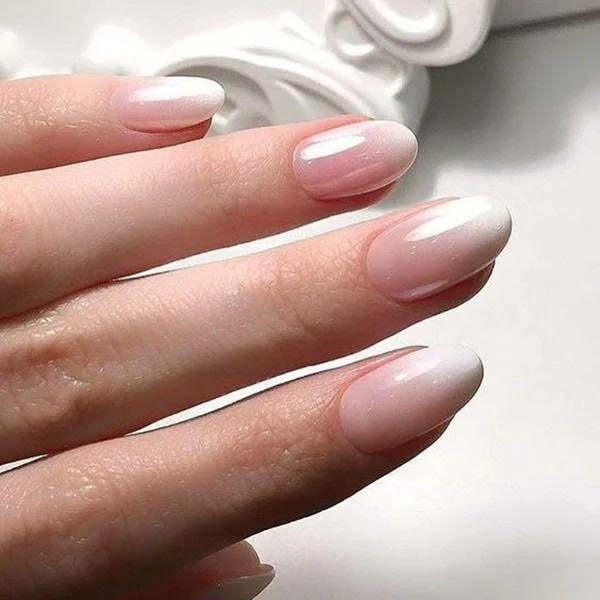
Round nails are especially great for those who have a busy lifestyle and need a low-maintenance option. They are also the go-to shape for those who want to keep their nails short without sacrificing style. The simplicity and elegance of round nails make them a timeless choice.
2. Square Nails
Square nails are another popular option for short nails. This shape involves filing the sides straight and creating a sharp, flat tip. Square nails offer a modern and edgy look that is perfect for making a statement. They are also practical, as the shape provides added strength and durability.
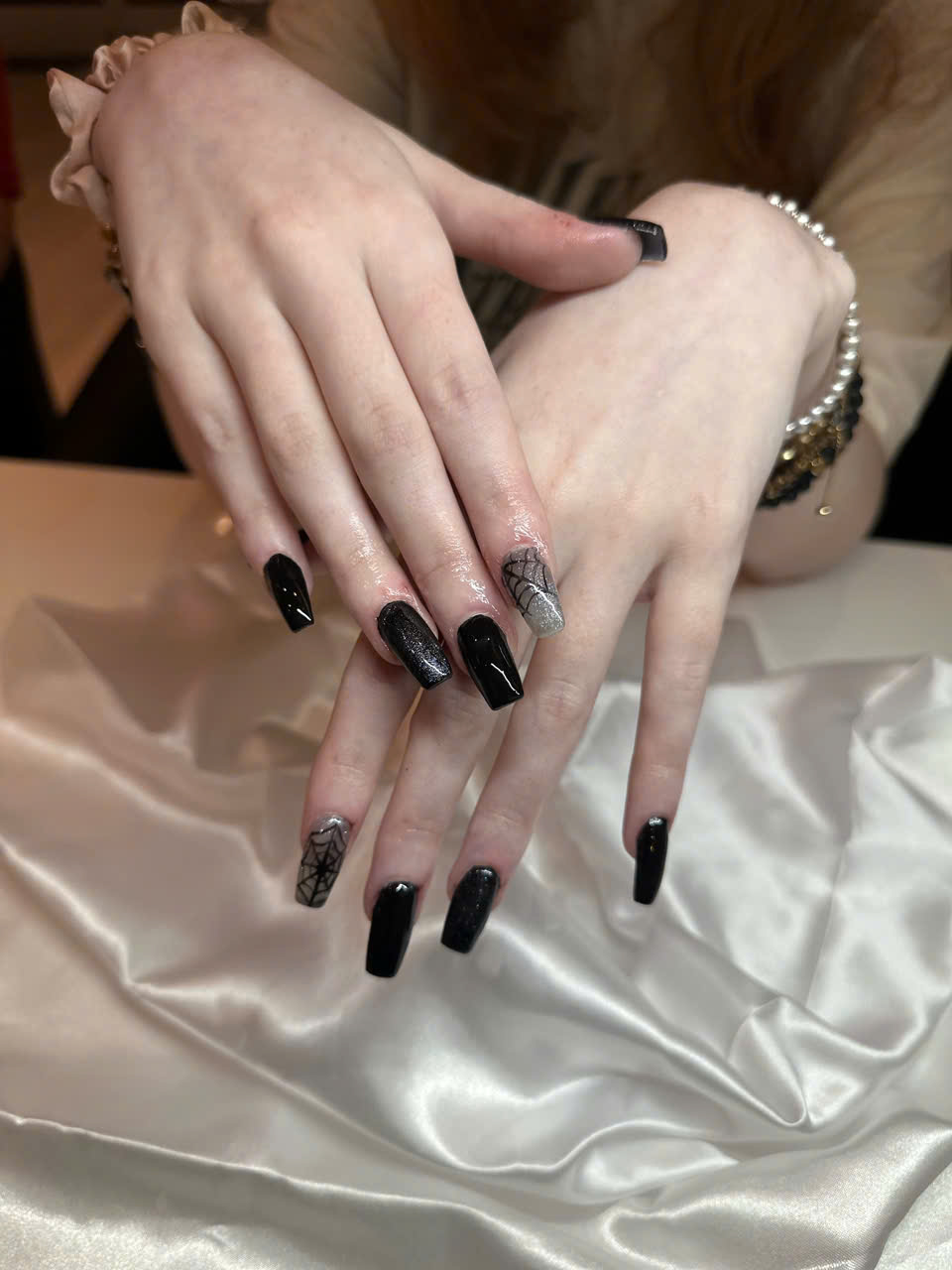
Square nails can be easily customized with different nail polish colors and designs. Whether you prefer bold and bright colors or subtle and neutral tones, square nails provide a versatile canvas for your creativity. This shape is particularly popular among those who enjoy experimenting with nail art.
3. Oval Nails
Oval nails combine the elegance of round nails with the sophistication of almond nails. This shape involves filing the sides straight and rounding out the tip. Oval nails are flattering for all finger shapes and can make short nails appear longer and more graceful.
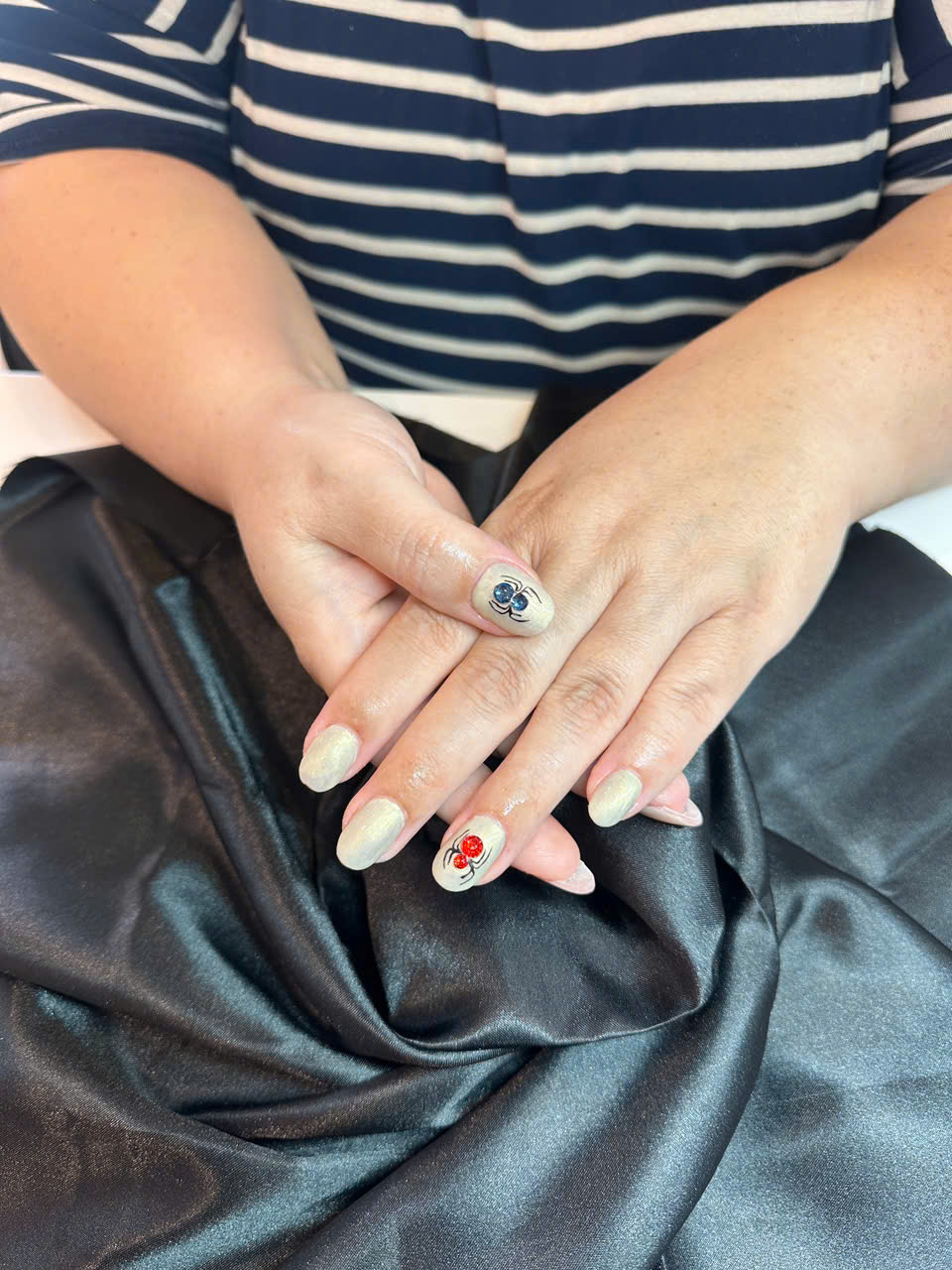
Oval nails are a great choice for special occasions or when you want to add a touch of sophistication to your look. This shape elongates the fingers and creates a more feminine appearance. Oval nails are also less prone to breakage compared to other shapes, making them a practical option for those with shorter nails.
4. Squoval Nails
Squoval nails are a hybrid of square and oval shapes. This shape is achieved by filing the sides straight and rounding off the corners. Squoval nails offer the best of both worlds, combining the durability of square nails with the softness of oval nails. This shape is versatile and suitable for both casual and formal occasions.
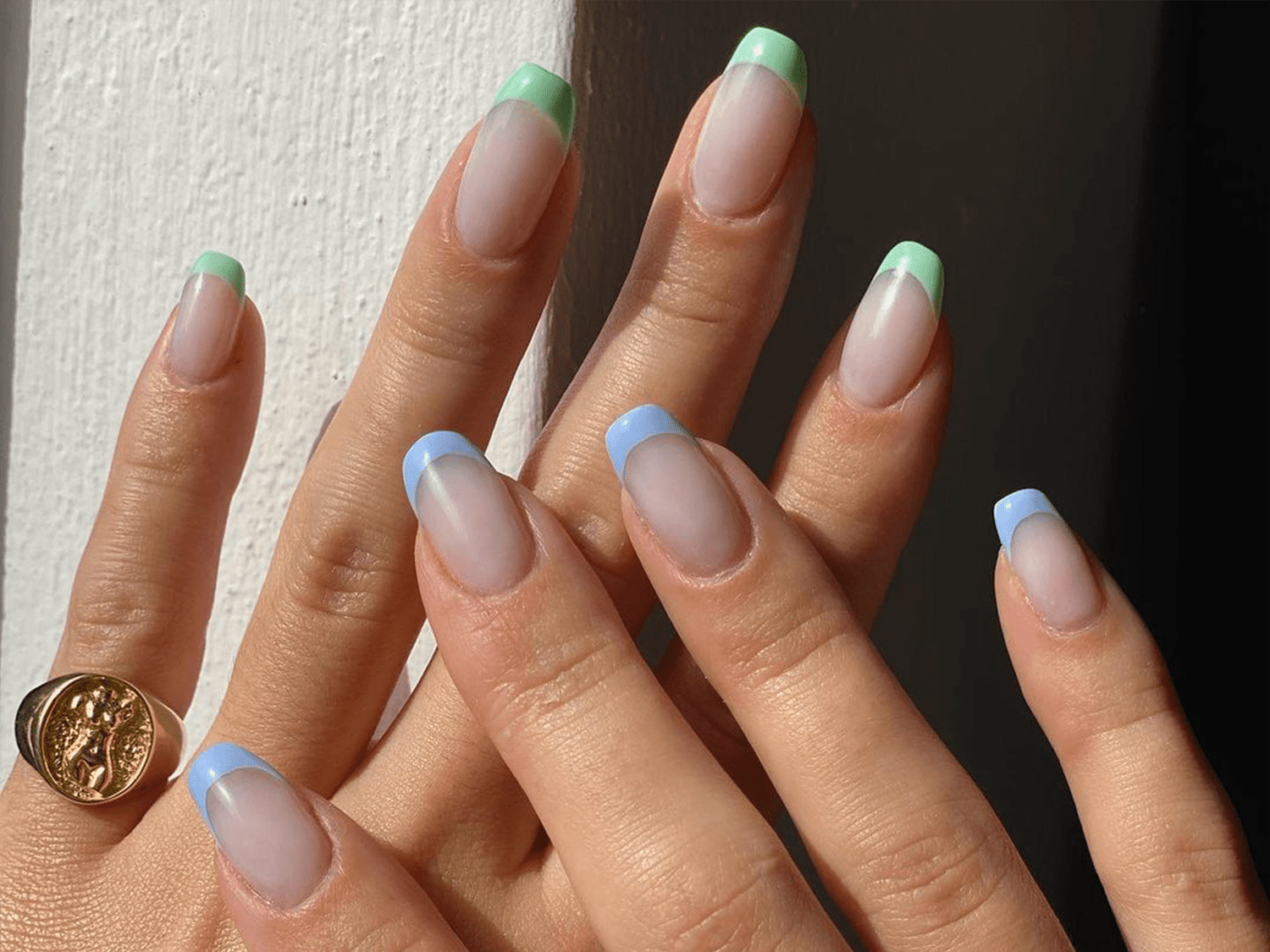
Squoval nails are perfect for those who want a balance between style and practicality. They provide the strength and durability of square nails while offering the elegance and grace of oval nails. Squoval nails are easy to maintain and are a great choice for everyday wear.
5. Almond Nails
Almond nails are a chic and sophisticated option for short nails. This shape involves filing the sides to create a tapered tip that resembles the shape of an almond. Almond nails can elongate the fingers and create a more feminine and elegant look. While they may require more maintenance than other shapes, the end result is worth the effort.
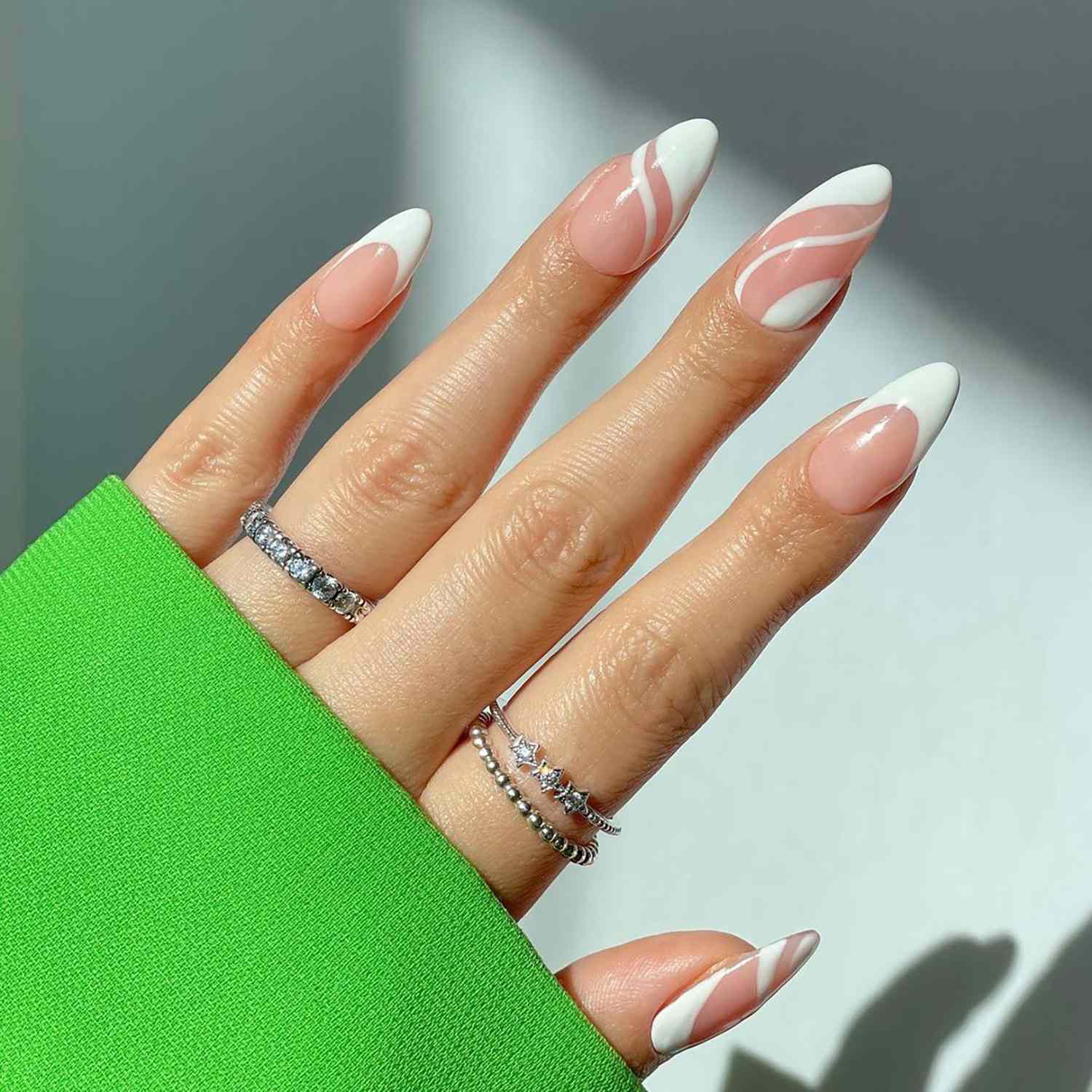
Almond nails are ideal for those who want to make a statement with their nails. This shape is perfect for special occasions or when you want to add a touch of glamour to your look. Almond nails can be customized with various nail art designs and colors, allowing you to express your creativity.
How to Achieve the Perfect Nail Shape
Achieving the perfect nail shape requires the right tools and techniques. Here are some steps to help you get started:
- Choose the Right Nail File: Select a nail file with a fine grit to shape your nails without causing damage.
- File in One Direction: Avoid sawing back and forth, as this can weaken your nails. Instead, file in one direction to maintain the strength of your nails.
- Follow the Natural Shape: Follow the natural curve of your nail bed to create a shape that complements your fingers.
- Be Patient: Take your time to achieve the desired shape and avoid rushing the process.
How to Choose the Best Nail Shape for You
Selecting the best nail shape for short nails depends on several factors, including your personal style, lifestyle, and nail health. Here are some tips to help you choose the right shape:
- Consider Your Lifestyle: If you lead an active lifestyle or work with your hands, opt for a shape that is practical and durable, such as round or squoval nails.
- Think About Maintenance: Some shapes require more maintenance than others. Choose a shape that fits your grooming routine.
- Match Your Style: Choose a nail shape that complements your personal style and fashion preferences.
- Assess Your Nail Health: If your nails are prone to breaking, choose a shape that provides added strength and durability.
Tips for Maintaining Short Nails
Regardless of the nail shape you choose, maintaining the health and appearance of your nails is essential. Here are some tips to keep your short nails looking their best:
- Regular Trimming: Keep your nails trimmed to maintain the desired shape and prevent breakage.
- Moisturize: Use cuticle oil and hand cream to keep your nails and skin hydrated.
- Avoid Harsh Chemicals: Protect your nails from harsh chemicals by wearing gloves when cleaning or using nail-friendly products.
- File Properly: Use a gentle nail file to shape your nails and avoid aggressive filing that can weaken them.
Common Mistakes to Avoid
- When shaping and caring for your short nails, it's important to avoid common mistakes that can lead to damage. Here are some tips to help you steer clear of these pitfalls:Avoid Over-Filing: - Excessive filing can weaken your nails and make them more prone to breakage.
- Don't Skip the Base Coat: Always apply a base coat before nail polish to protect your nails from staining and damage.
- Be Gentle: Handle your nails with care and avoid using them as tools to prevent breakage and damage.
- Keep Nails Dry: Moisture can weaken your nails, so be sure to dry them thoroughly after washing your hands or doing dishes.
Final Thoughts: Embracing Your Perfect Nail Shape
Choosing the right nail shape for short nails can transform your look and enhance the beauty of your hands. Whether you prefer a classic round shape or a modern almond shape, there are plenty of options to suit your style. Remember to consider your lifestyle, maintenance preferences, and nail health when selecting the perfect shape for your short nails. With the right care and attention, your short nails can look elegant, polished, and ready to impress.
Understanding Nail Structure and Anatomy
Before diving deeper into nail shapes, it's helpful to understand the basic structure of your nails. This knowledge will help you make more informed decisions about which shapes will work best with your natural nail beds.
The nail is composed of several key parts:
- Nail Plate: The visible, hard part of the nail that we shape and polish
- Nail Bed: The skin beneath the nail plate
- Cuticle: The thin layer of skin at the base of the nail
- Lunula: The whitish, half-moon shape at the base of the nail
- Matrix: The living part under the skin where nail growth begins
- Nail Fold: The skin surrounding the nail
Each nail shape works differently with these structures, which is why certain shapes may be more suitable for your particular nail beds. Understanding your unique nail anatomy can guide you toward shapes that enhance your natural features rather than working against them.
Matching Nail Shapes to Hand Types
The perfect nail shape isn't just about trends—it should complement your unique hand characteristics for the most flattering look.
For Short, Wide Fingers
If you have shorter, wider fingers, certain nail shapes can create a more elongated appearance:
- Almond Nails: The tapered shape helps create the illusion of longer, slimmer fingers
- Oval Nails: The elongated curve draws the eye up, making fingers appear longer
- Squoval Nails: A gentler alternative that still provides some lengthening effect
For Small Hands
Those with smaller hands benefit from shapes that create balance and proportion:
- Oval Nails: Creates the illusion of longer fingers without overwhelming small hands
- Round Nails: Offers a natural look that complements smaller hands without appearing disproportionate
- Short Almond Nails: Adds subtle length while maintaining proportion
For Long, Slim Fingers
If you have naturally long, slim fingers, you have more flexibility with nail shapes:
- Square Nails: Adds width and balance to slim fingers
- Squoval Nails: Provides a balanced look that complements long fingers
- Natural Shape: Often works beautifully with long fingers without modification
For Wide Nail Beds
Those with naturally wide nail beds can use certain shapes to create a more balanced appearance:
- Oval Nails: Narrows the appearance of wide nail beds
- Almond Nails: Creates a slimming effect for the entire finger
- Squoval Nails: Offers a middle-ground option that adds structure while softening width
Professional Techniques for Each Nail Shape
Professional Technique for Round Nails
Professional nail technicians follow these steps to create perfect round nails:
- Trim nails to the desired length, slightly longer than the final shape
- Position the file at a 45-degree angle to the nail edge
- File from the side walls toward the center in one fluid motion
- Follow the natural curve of your fingertip, creating a smooth arc
- Check the shape from multiple angles—below, above, and from the sides
- Ensure symmetry across all ten nails by comparing them side by side
- Finish with a fine buffer to smooth any rough edges
Professional Technique for Square Nails
For the perfect square shape, professionals recommend:
- Trim the nail straight across to establish the basic shape
- Hold the file parallel to the free edge of the nail
- File straight across the free edge with firm, controlled strokes
- Use an up-and-down motion on each side while keeping the file perpendicular to the nail
- Create sharp, 90-degree angles where the side walls meet the free edge
- Check the shape by viewing hands from the client's perspective
- Use a buffer to remove any fraying from the free edge and underneath
Professional Technique for Squoval Nails
To achieve the perfect squoval:
- Begin with a square shape by filing straight across
- Use the file to gently round the corners in one smooth motion
- Connect the sidewalls and free edge with a slightly curved stroke
- Maintain the straight free edge while softening the corners
- Check from multiple angles to ensure symmetry
- Make small adjustments to achieve consistency across all nails
- Buff to smooth any sharp edges or transitions
Professional Technique for Oval Nails
For elegant oval nails:
- Trim nails to the desired length, slightly longer than the final shape
- Position the file at a 45-degree angle on both sides of the nail
- File each side with a curved motion that tapers toward the center
- Create an egg-like shape that is widest at the base and narrows at the tip
- Round the tip with gentle strokes to complete the oval
- Compare nails side by side to ensure consistency
- Buff for a smooth, polished finish
Professional Technique for Almond Nails
Even on shorter nails, professionals create almond shapes by:
- Mark the center of the nail as a reference point
- Begin filing from the corner, moving in one direction with a slightly curved motion
- Work gradually on both sides, maintaining balance and symmetry
- Create a tapered effect that narrows toward the center mark
- Soften the tip with light buffing to complete the almond shape
- Check from multiple angles to spot any imperfections
- Compare all nails to ensure a consistent shape across the hand
Seasonal Nail Shape Trends
Nail shapes, like fashion, evolve with seasons and trends. Understanding current trends can help you stay fashionable with your short nails.
Winter 2025 Trends
This winter has seen a strong preference for:
- Squoval Nails: The balance of structure and softness makes this shape particularly popular for winter manicures
- Short Square Nails: Perfect for showcasing rich, dark winter colors and glitter accents
- Natural-Looking Shapes: Low-maintenance options that work well with winter's practical needs
Spring Styles
As we move into spring, trending shapes include:
- Oval Nails: Feminine and elegant, ideal for pastel spring colors
- Round Nails: Perfect for floral nail art and delicate spring designs
- Short Almond Nails: Adding a touch of sophistication to spring looks
Celebrity-Inspired Shapes
Many style influencers and celebrities have made certain nail shapes their signature:
- Squoval Nails: Popular among celebrities who balance active lifestyles with red carpet appearances
- Short Almond Nails: A favorite for those wanting elegance without excessive length
- Minimalist Square Nails: Embraced by those with a modern, clean aesthetic
Nail Shapes and Lifestyle Considerations
For Active Lifestyles
If you're athletic or work with your hands:
- Round Nails: The most durable option with no sharp corners to catch and break
- Natural Shape: Following your nail's natural growth pattern minimizes breakage
- Short Square Nails: Provides strength while maintaining a stylish look
For Office Professionals
If you type all day or work in a professional environment:
- Squoval Nails: Professional-looking with practical durability
- Short Oval Nails: Elegant but functional for keyboard work
- Round Nails: Classic and appropriate for conservative workplaces
For Creative Professionals
If you work in creative fields:
- Short Almond Nails: Expressive but practical for hands-on work
- Square Nails: Perfect canvas for bold nail art and self-expression
- Customized Shapes: Mixing different shapes across nails for an artistic statement
Nail Health and Shape Selection
For Weak or Brittle Nails
If your nails tend to break or split:
- Round Nails: The absence of corners reduces catching and breaking
- Squoval Nails: Provides reinforcement while minimizing breakage points
- Natural Shape: Works with your nail's inherent strength pattern
For Growing Out Damaged Nails
If you're recovering from nail damage:
- Short Round Nails: Minimizes stress on the nail plate during regrowth
- Gentle Square Nails: Provides structure without stress on fragile areas
- Progressive Shaping: Gradually introducing your preferred shape as nails heal
Strengthening Treatments and Compatible Shapes
Certain nail shapes work better with strengthening treatments:
- Square Nails: Hold strengthening overlays well without lifting
- Round Nails: Allow even application of treatments across the nail
- Natural Shape: Permits treatments to work with your nail's natural growth pattern
Expert Q&A: Common Questions About Nail Shapes for Short Nails
What is the strongest nail shape for short nails?
Round and square nails typically offer the most durability for short nails. The absence of tapered edges and points reduces the likelihood of breaking and splitting. Square nails provide structural reinforcement at the free edge, while round nails eliminate corners that might catch and tear.
How can I make my fingers look longer with short nails?
Oval and almond shapes are most effective for creating the illusion of length. These shapes narrow at the tip, drawing the eye upward and making fingers appear longer. Even slight tapering on short nails can create this elongating effect. Complementary nail colors like nude tones that match your skin tone can enhance this lengthening illusion.
Which nail shape is best for nail biters trying to grow their nails?
Round or squoval shapes are ideal for recovering nail biters. The smooth edges are less likely to snag, reducing the temptation to pick or bite. These shapes also accommodate the typically shorter free edge while still looking intentional and neat. Maintaining a consistent shape helps establish a healthy nail care routine.
How often should I reshape my short nails?
For short nails, reshaping every 1-2 weeks is typically sufficient. Active lifestyles might require more frequent maintenance, while office workers might stretch to 2 weeks between shapings. Regular reshaping helps prevent snags and breaks that can damage your growing nails. Light maintenance filing between full reshapings can maintain your desired shape.
DIY vs. Professional Nail Shaping
When to DIY
Consider shaping your own nails when:
- You're maintaining a simple shape like round or square
- You have the proper tools including quality files of different grits
- You're confident in your ability to create symmetrical shapes
- You're not dealing with significant nail damage or issues
When to See a Professional
Consider professional help when:
- You're significantly changing your nail shape
- You're dealing with damaged or problematic nails
- You want precision with more complex shapes like almond
- You're preparing for a special occasion where details matter
Professional Tips Adapted for Home Use
Nail technicians recommend these techniques for DIY shaping:
- Mark reference points on your nails before filing to ensure symmetry
- Work in good lighting, ideally natural daylight
- File a little at a time, frequently comparing nails for consistency
- Use a crystal file rather than emery boards for more control and precision
- Hold your hands at different angles to check your progress
Advanced Nail Art Considerations for Different Shapes
Different nail shapes provide unique canvases for nail art and design.
Best Designs for Round Nails
Round nails work beautifully with:
- Circular or curved designs that complement the nail shape
- French manicure variations with rounded tips
- Central focal point designs that draw attention to the center
- Vertical designs that create the illusion of length
Best Designs for Square Nails
Square nails are perfect for:
- Geometric patterns that echo the straight edges
- Block color designs with clean divisions
- Horizontal stripes that accentuate the width
- Corner accents that highlight the shape's unique angles
Best Designs for Oval & Almond Nails
These more tapered shapes complement:
- Elongated designs that follow the natural taper
- Gradient effects that flow from base to tip
- Asymmetrical designs that play with the shape's natural flow
- Vertical elements that enhance the lengthening effect
Best Designs for Squoval Nails
The versatile squoval shape works well with:
- Designs that incorporate both curved and straight elements
- Central designs with framing elements along the edges
- Versatile French tips that can be straight or curved
- Multi-dimensional nail art that utilizes the entire nail surface
Understanding Nail Shape Transitions
Growing Out to a New Shape
When transitioning between shapes:
- Make incremental changes rather than dramatic ones
- Allow adequate growth before attempting more tapered shapes
- Strengthen nails during transition periods with appropriate treatments
- Consider the "in-between" stages and choose flattering interim shapes
Seasonal Shape Transitions
Many nail enthusiasts change shapes with the seasons:
- Transition to more practical shapes (round, square) for winter
- Experiment with more feminine shapes (oval, almond) for spring/summer
- Use the transition between seasons to gradually modify your shape
- Consider how seasonal activities might impact your ideal nail shape
Care Routines for Different Nail Shapes
Care Routine for Square Nails
Square nails require specific maintenance:
- Focus on corner care to prevent snagging and breaking
- Use a fine file to maintain the precise 90-degree angles
- Apply reinforcing base coats at the edges to prevent lifting
- Check side walls regularly for any signs of splitting
Care Routine for Oval and Almond Nails
These tapered shapes need specialized attention:
- Reinforce the center where the nail narrows with strengthening treatments
- Check symmetry frequently to maintain the balanced appearance
- File gently at the tip to maintain the smooth curve
- Apply polish in thin layers to prevent buildup that might weigh down the tips
Care Routine for Round and Squoval Nails
These more natural shapes require:
- Regular edge maintenance to keep the curve or squared-off corners consistent
- Attention to the side walls where growth can alter the shape
- Gentle buffing to maintain smooth transitions between edges
- Consistent filing technique to preserve the intended shape
Frequently Asked Questions
What is the best overall nail shape for short nails?
Round nails are generally considered the best option for short nails as they're low-maintenance, less prone to breakage, natural-looking, and easy to achieve at home. They also create the appearance of a longer nail, making hands look more slender.
Which nail shape is most durable for short nails?
Round and squoval nails are most resistant to breakage because they have no sharp edges that can cause weak points. Natural-looking shapes that follow your own nail pattern in a short length are among the strongest options.
What nail shapes work best for wide nail beds?
For wide nail beds, oval and almond shapes are ideal as they help create the illusion of length and slenderness. Round nails can also work well for wide nail beds by creating a more elongated appearance.
How do I prevent my square short nails from breaking?
To prevent square short nails from breaking: apply cuticle oil daily, avoid excessive buffing which weakens nails, use a nail strengthener regularly, and file properly in one direction. Also, consider slightly beveling the corners to reduce catching.
What nail designs work best on short nails?
Several designs work beautifully on short nails: 3D accents (small sculptural elements), snakeskin patterns, soft ombré effects, bold solid colors (especially dark red, bold blue, and bright white), and double French tips that create the illusion of longer nails.
How can I make my short nails look more elegant?
Keep nails well-manicured with clean edges and healthy cuticles, choose flattering colors that complement your skin tone, consider subtle nail art that creates the illusion of length, push back cuticles gently to reveal more nail space, and maintain consistent shape across all nails.
What's the easiest nail shape to maintain at home?
Round and natural shapes are the easiest to maintain at home since they follow the natural curve of your fingertip and require minimal specialized technique. Square nails are also relatively easy to maintain with practice, requiring just a straight file across the free edge.